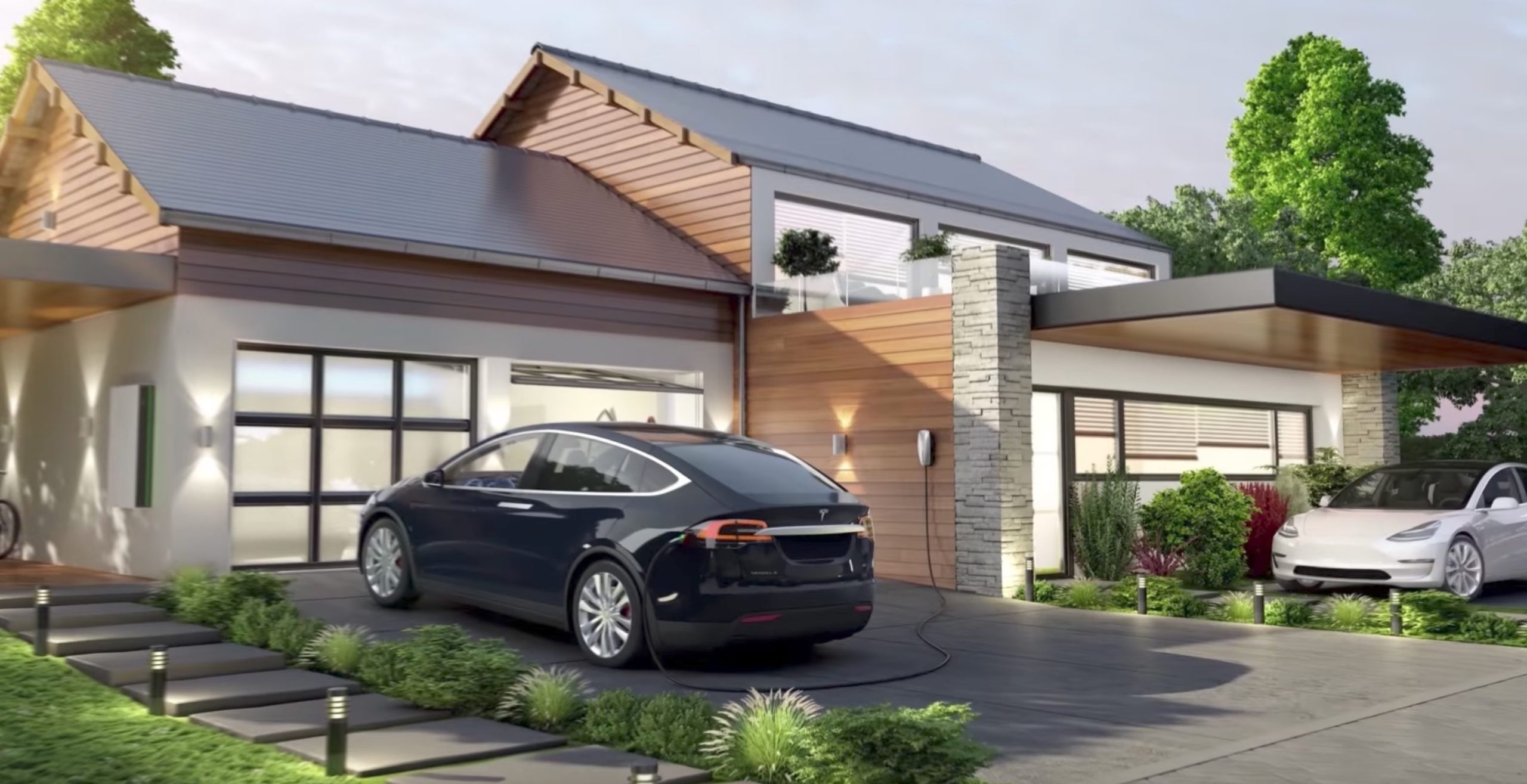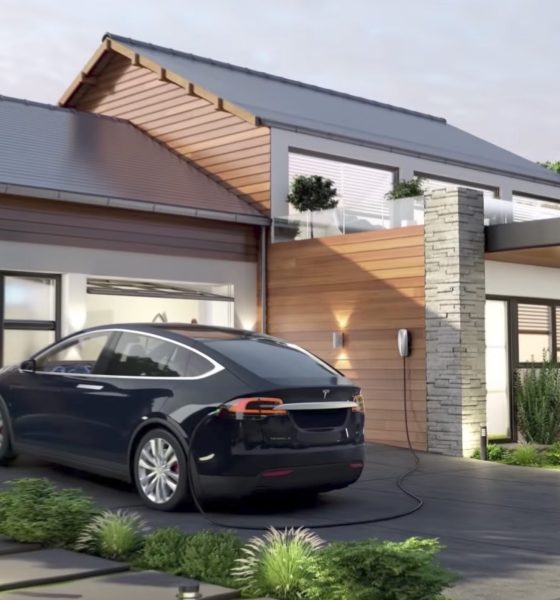

Energy
Tesla is currently ‘aggressively ramping’ energy business, says CTO JB Straubel
Amid rising competition in the residential solar market from rivals such as SunRun, Tesla CTO JB Straubel stated that Tesla is ramping up its efforts to bolster its energy business. According to Straubel, the reception of the public to products like the Powerwall 2 and Solar Roof tiles has been similar to the Model 3. Thus, Tesla is now doing what it can to increase its capacity to produce its energy products as fast as it can.
Straubel’s update to Tesla’s energy business came as a statement to USA Today, which recently published an article about the residential solar market in the United States. While the Tesla CTO did not provide the actual figures of its Powerwall 2 and Solar Roof reservations, Straubel did state that for now, Tesla is unable to keep up with deposits being put down for the products. Straubel also emphasized that Tesla is not in any way stepping back from the residential energy business.
“No one should see us as stepping back from solar. In fact, it’s the opposite. It’s like with Model 3. People have come flooding in and are waiting on the product. So now we’re aggressively ramping our capacity,” he said.
To address the demand for its residential products, Straubel stated that production of the Powerwall 2 is set to pick up later this year, while output for Solar Roof tiles is expected to accelerate in 2019. The Tesla CTO expects these initiatives to reduce the wait times for these energy products.
The Tesla CTO’s latest statement comes as an encouraging update to the company’s residential energy business, much of which has been under the news radar for most of the year. The first consumer installations of the Solar Roof began earlier this year, and reports emerged that Gigafactory 2 in Buffalo, NY is ramping up hiring, but apart from these, Tesla’s energy initiatives appear to be focused on large-scale industrial projects, such as its upcoming Powerpack farm in Victoria, and its virtual power plant in South Australia.
Tesla’s residential energy business in the United States took a blow last month, as well, with the company closing a dozen of its solar facilities across nine states in the country as part of its restructuring. Apart from this, Tesla also announced that it would not renew its partnership with Home Depot to sell its solar solutions and Powerwall 2 home battery storage units.
Regardless of these, the progress of Tesla’s industrial energy projects is indicative of the potential of its residential initiatives. Over the past year, after all, Tesla had all but proved that its battery technology is a feasible alternative to conventional power solutions. The warm reception to its big battery in South Australia, which continues to support the region’s embattled energy grid, is a testament to this.
Considering the competition from its local competitors, Tesla would have to increase its push for its residential energy business in the United States. Solar analyst for GTM Research Allison Mond, for one, stated that Tesla could see its market share shrink in the coming quarters due to competitors and the company’s lack of focus on its solar products. Nevertheless, Straubel stated that market share is not really Tesla’s focus for its residential energy business.
“We’re focused intently on the customer experience, not on having a higher market share. We’re looking at the bigger picture,” he said.
During Tesla’s 2018 Annual Shareholder Meeting, Tesla CEO Elon Musk mentioned that the company is getting closer to a battery breakthrough. Addressing shareholders, Musk stated that Tesla is on pace to hit a battery cell cost of $100 per kWh by the end of 2018 depending on the stability of current commodity prices. Considering Straubel’s mention of a ramp in Powerwall 2 production later this year, it seems like Tesla’s push into residential solar could happen just as the company hits a breakthrough in its battery technology.

Cybertruck
Tesla updates Cybertruck owners about key Powershare feature

Tesla is updating Cybertruck owners on its timeline of a massive feature that has yet to ship: Powershare with Powerwall.
Powershare is a bidirectional charging feature exclusive to Cybertruck, which allows the vehicle’s battery to act as a portable power source for homes, appliances, tools, other EVs, and more. It was announced in late 2023 as part of Tesla’s push into vehicle-to-everything energy sharing, and acting as a giant portable charger is the main advantage, as it can provide backup power during outages.
Cybertruck’s Powershare system supports both vehicle-to-load (V2L) and vehicle-to-home (V2H), making it flexible and well-rounded for a variety of applications.
However, even though the feature was promised with Cybertruck, it has yet to be shipped to vehicles. Tesla communicated with owners through email recently regarding Powershare with Powerwall, which essentially has the pickup act as an extended battery.
Powerwall discharge would be prioritized before tapping into the truck’s larger pack.
However, Tesla is still working on getting the feature out to owners, an email said:
“We’re writing to let you know that the Powershare with Powerwall feature is still in development and is now scheduled for release in mid-2026.
This new release date gives us additional time to design and test this feature, ensuring its ability to communicate and optimize energy sharing between your vehicle and many configurations and generations of Powerwall. We are also using this time to develop additional Powershare features that will help us continue to accelerate the world’s transition to sustainable energy.”
Owners have expressed some real disappointment in Tesla’s continuous delays in releasing the feature, as it was expected to be released by late 2024, but now has been pushed back several times to mid-2026, according to the email.
Foundation Series Cybertruck buyers paid extra, expecting the feature to be rolled out with their vehicle upon pickup.
Cybertruck’s Lead Engineer, Wes Morrill, even commented on the holdup:
As a Cybertruck owner who also has Powerwall, I empathize with the disappointed comments.
To their credit, the team has delivered powershare functionality to Cybertruck customers who otherwise have no backup with development of the powershare gateway. As well as those with solar…
— Wes (@wmorrill3) December 12, 2025
He said that “it turned out to be much harder than anticipated to make powershare work seamlessly with existing Powerwalls through existing wall connectors. Two grid-forming devices need to negotiate who will form and who will follow, depending on the state of charge of each, and they need to do this without a network and through multiple generations of hardware, and test and validate this process through rigorous certifications to ensure grid safety.”
It’s nice to see the transparency, but it is justified for some Cybertruck owners to feel like they’ve been bait-and-switched.
Energy
Tesla starts hiring efforts for Texas Megafactory
Tesla’s Brookshire site is expected to produce 10,000 Megapacks annually, equal to 40 gigawatt hours of energy storage.

Tesla has officially begun hiring for its new $200 million Megafactory in Brookshire, Texas, a manufacturing hub expected to employ 1,500 people by 2028. The facility, which will build Tesla’s grid-scale Megapack batteries, is part of the company’s growing energy storage footprint.
Tesla’s hiring efforts for the Texas Megafactory are hinted at by the job openings currently active on the company’s Careers website.
Tesla’s Texas Megafactory
Tesla’s Brookshire site is expected to produce 10,000 Megapacks annually, equal to 40 gigawatt hours of energy storage, similar to the Lathrop Megafactory in California. Tesla’s Careers website currently lists over 30 job openings for the site, from engineers, welders, and project managers. Each of the openings is listed for Brookshire, Texas.
The company has leased two buildings in Empire West Business Park, with over $194 million in combined property and equipment investment. Tesla’s agreement with Waller County includes a 60% property tax abatement, contingent on meeting employment benchmarks: 375 jobs by 2026, 750 by 2027, and 1,500 by 2028, as noted in a report from the Houston Business Journal. Tesla is required to employ at least 1,500 workers in the facility through the rest of the 10-year abatement period.
Tesla’s clean energy boom
City officials have stated that Tesla’s arrival marks a turning point for the Texas city, as it highlights a shift from logistics to advanced clean energy manufacturing. Ramiro Bautista from Brookshire’s economic development office, highlighted this in a comment to the Journal.
“(Tesla) has great-paying jobs. Not just that, but the advanced manufacturing (and) clean energy is coming to the area,” he said. “So it’s not just your normal logistics manufacturing. This is advanced manufacturing coming to this area, and this brings a different type of job and investment into the local economy.”
Energy
Tesla and Samsung SDI in talks over new US battery storage deal: report
The update was related by industry sources and initially reported by South Korean news outlets.

Recent reports have suggested that Tesla and Samsung SDI are in talks over a potential partnership to supply batteries for large-scale energy storage systems (ESS).
The update was related by industry sources and initially reported by South Korean news outlets.
ESS batteries to be built at Samsung’s Indiana plant
As noted in a report from Korea JoongAng Daily, the demand for energy storage systems has been growing rapidly in North America, thanks in no small part to the surge in AI investments across numerous companies. With this in mind, Tesla has reportedly approached Samsung SDI about a potential battery supply deal.
The deal is reportedly worth over 3 trillion Korean won (approximately $2.11 billion) and will span three years, according to The Korea Global Economic Daily. A battery supply deal with Samsung SDI could make sense for Tesla as the company already has a grid-scale battery, the Megapack, which is perfect for industrial use. Samsung SDI could simply supply cells for the EV maker.
Production of the batteries would reportedly take place at Samsung SDI’s joint venture factory with Stellantis in Indiana, which is currently under construction. Samsung SDI recently announced plans to use part of that plant’s EV lines to produce cells for ESS, with a targeted capacity of 30 GWh by the end of next year.
Tesla and Samsung’s partnership
At present, only a handful of manufacturers, including Korea’s LG Energy Solution, Samsung SDI, SK On, and Japan’s Panasonic, are capable of producing energy storage-scale batteries domestically in the United States. A Samsung SDI official issued a comment about the matter, stating, “Nothing has been finalized regarding cooperation with Tesla.”
The possible energy storage system deal adds another layer to Tesla’s growing collaboration with Samsung, which is already in line as a partner in the upcoming production of Tesla’s AI5 and AI6 chips. Early sample manufacturing of the AI6 is expected to begin in South Korea, with mass production slated for Samsung’s Texas-based Taylor foundry when it starts operations.
The AI6 chip will power Tesla’s next wave of high-volume projects, including the Optimus humanoid robot and the autonomous Cybercab service. Musk has called the partnership with Samsung a “real collaboration,” adding that he personally plans to “walk the line” at the Taylor facility to speed up progress.








